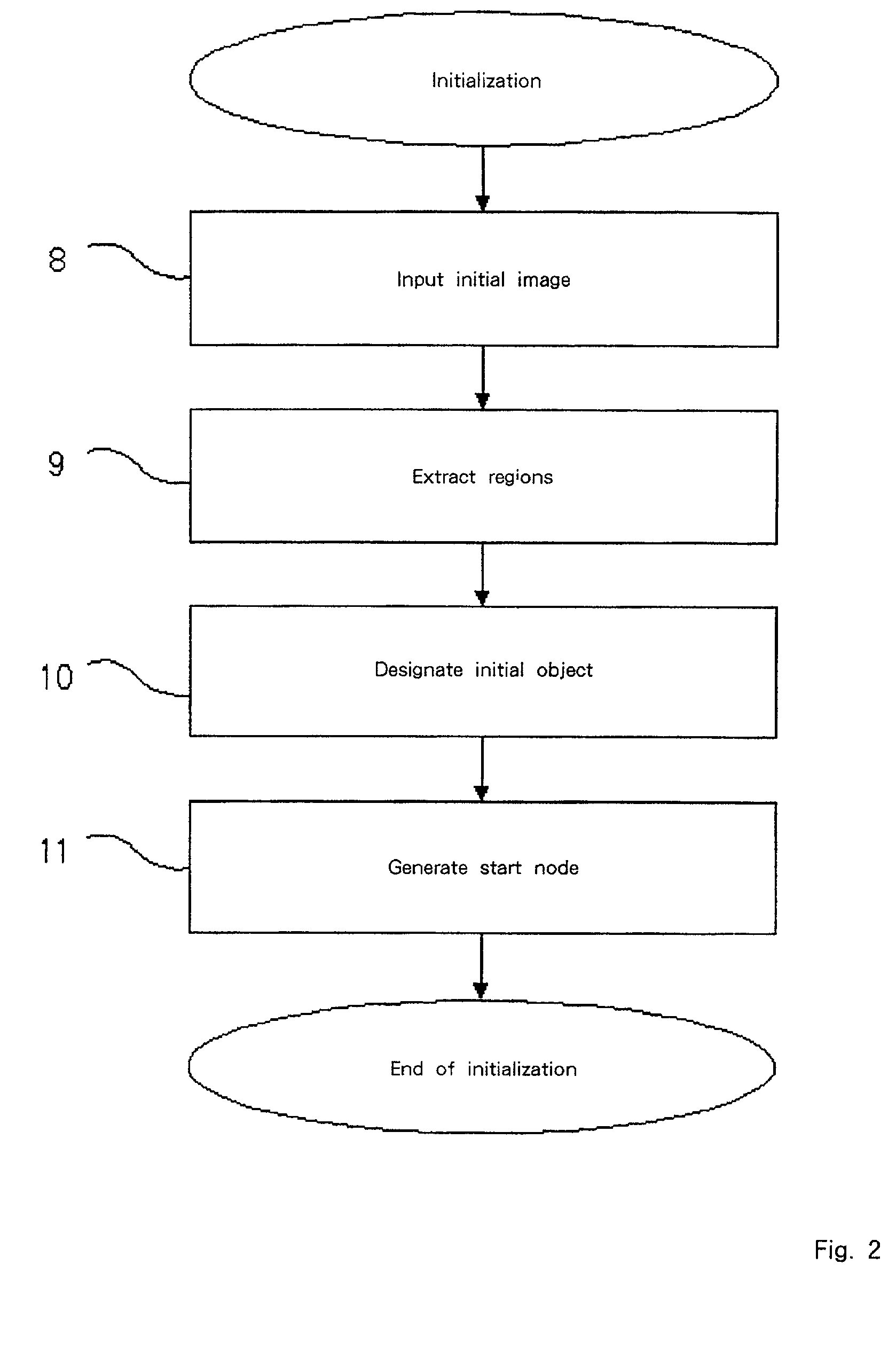Image processing method, image processing system and storage medium therefor
a technology of image processing applied in the field of image processing method and image processing system, can solve the problems of difficult operation of region extraction, inability to effectively extract a region composed of solid materials, and inability to effectively identify objects, etc., to achieve high degree of freedom, high calculation cost, and effective identification of objects
- Summary
- Abstract
- Description
- Claims
- Application Information
AI Technical Summary
Benefits of technology
Problems solved by technology
Method used
Image
Examples
Embodiment Construction
[0044]According to the present invention, an image region is extracted from image data by separating the foreground of an image from the background. The distance whereat the shape of a two-dimensional histogram in color space is converted into a feature space can be employed to extract the image region. While taking into account all the available connections of extracted regions, a graph is prepared while using the regions between frames as nodes. The change value of a confidence factor can be provided for each node, and the image features in color space and in real space can be provided as a weight for the edge that connects the nodes. The path of the graph is searched for, and connections that are probably not used as paths are eliminated based on the path confidence factor. Further, a branching node is detected as an occlusion, and is marked. When there is only one choice for the connection of occlusions, that connection is selected. When there are multiple available connections,...
PUM
 Login to View More
Login to View More Abstract
Description
Claims
Application Information
 Login to View More
Login to View More - R&D
- Intellectual Property
- Life Sciences
- Materials
- Tech Scout
- Unparalleled Data Quality
- Higher Quality Content
- 60% Fewer Hallucinations
Browse by: Latest US Patents, China's latest patents, Technical Efficacy Thesaurus, Application Domain, Technology Topic, Popular Technical Reports.
© 2025 PatSnap. All rights reserved.Legal|Privacy policy|Modern Slavery Act Transparency Statement|Sitemap|About US| Contact US: help@patsnap.com



